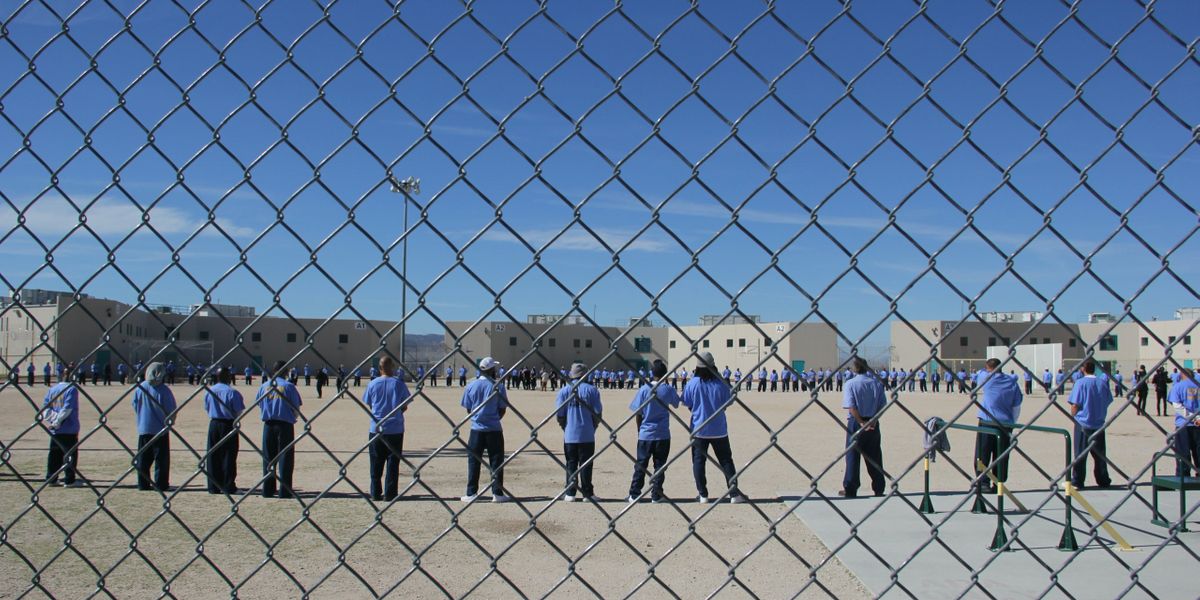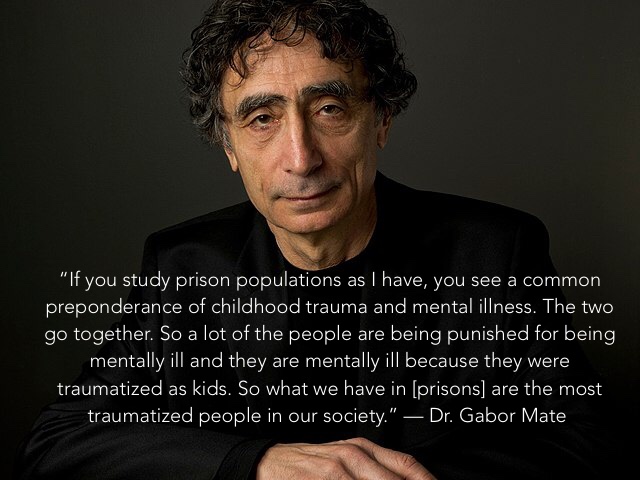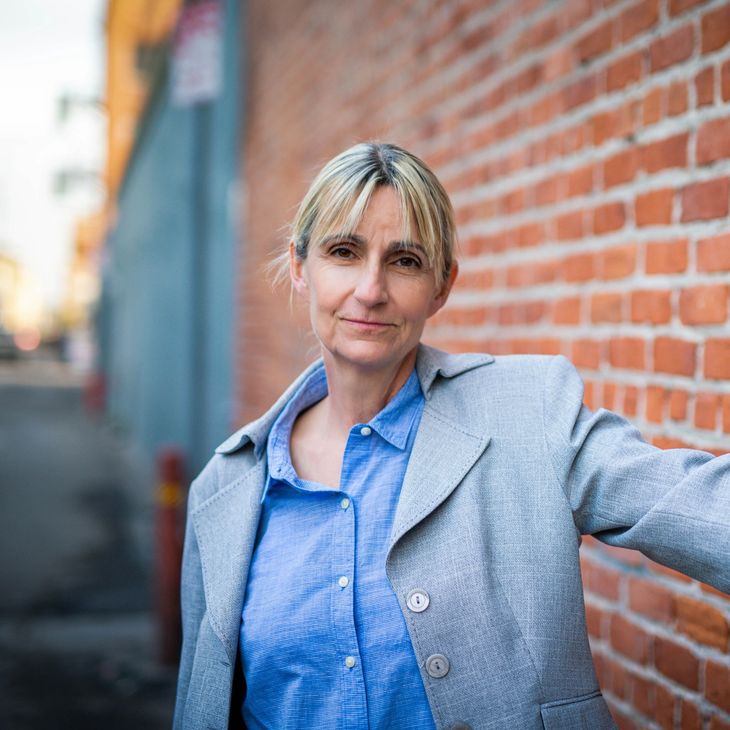
- Better Society -
- 5mins -
- 661 views
As 235 inmates close in on a woman in the prison yard, what they (and we) learn is heartbreaking
The Compassion Prison Project is about bringing compassion, childhood trauma awareness and creative inspiration to the men and women living behind bars, some of the most traumatised members of our society.
Step Inside The Circle
On 12 February, 2020, 235 incarcerated men gathered in the yard at a California maximum security prison to learn something about themselves for the first time.

Adverse Childhood Experiences and the Compassion Trauma Circle
It’s a sobering fact that 65% of Americans have experienced at least one Adverse Childhood Experience (ACEs). 98% of the incarcerated men surveyed experienced at least one ACE and over 70% had scores 4 or higher ACEs (the national average is 17%).
On February 12, 2020, 23 Crew Members, including Academy-Award nominated Director of Photography Rodrigo Prieto and Grammy-Award winning producer Fritzi Horstman, began filming the documentary “Step Inside the Circle."
Filmed at a maximum security prison in Lancaster, California, the focus of the day was one of Compassion Prison Project‘s cornerstones of prison reform: filming the Compassion Trauma Circle where 235 incarcerated men stepped inside the circle for each traumatic event they experience in their childhood.
Compassion Trauma Circle:
- First, the prisoners form a circle.
- For each ACE (and forms of toxic stress) they have experienced, they take one step forward.
- When the circle is complete, they see that they are not alone, part of a community, their pain is shared, and that almost all of them have been victims of inhumanity and violence. This, say Compassion Prison Project, is prison reform.

Childhood Trauma and it’s effects
What is Childhood Trauma?
According to the National Institute of Mental Health, childhood trauma is defined as:
“The experience of an event by a child that is emotionally painful or distressful, which often results in lasting mental and physical effects.”
What is an ACE?
An ACE is an "Adverse Childhood Experience" also known as trauma.
This term originated from the study created at Kaiser by Dr. Vincent Felitti and Robert Anda of the CDC.
ACEs and Toxic Stress
According to the CDC: ACEs and associated conditions, such as living in under-resourced or racially segregated neighborhoods, frequently moving, and experiencing food insecurity, can cause toxic stress (extended or prolonged stress).
Toxic stress from ACEs can change brain development and affect such things as attention, decision-making, learning, and response to stress.
Childhood Trauma Statistics
- 60% of adults report experiencing abuse or other difficult family circumstances during childhood.
- 26% of children in the United States will witness or experience a traumatic event before they turn four.
- Four of every 10 children in American say they experienced a physical assault during the past year, with one in 10 receiving an assault-related injury.
- 2% of all children experienced sexual assault or sexual abuse during the past year, with the rate at nearly 11% for girls aged 14 to 17.
- Nearly 14%of children repeatedly experienced maltreatment by a caregiver, including nearly 4% who experienced physical abuse.
- 1 in 4 children was the victim of robbery, vandalism or theft during the previous year.
- More than 13% of children reported being physically bullied, while more than 1 in 3 said they had been emotionally bullied.
- 1 in 5 children witnessed violence in their family or the neighborhood during the previous year
- In one year, 39% of children between the ages of 12 and 17 reported witnessing violence, 17%reported being a victim of physical assault and 8%reported being the victim of sexual assault.
- More than 60% of youth age 17 and younger have been exposed to crime, violence and abuse either directly or indirectly.
- More than 10% of youth age 17 and younger reported five or more exposures to violence.
- About 10% of children suffered from child maltreatment, were injured in an assault, or witnessed a family member assault another family member.
- About 25% of youth age 17 and younger were victims of robbery or witnessed a violent act
- Nearly half of children and adolescents were assaulted at least once in the past year.
- Among 536 elementary and middle school children surveyed in an inner city community, 30%had witnessed a stabbing and 26% had witnessed a shooting
- Young children exposed to five or more significant adverse experiences in the first three years of childhood face a 76% likelihood of having one or more delays in their language, emotional or brain development.
As the number of traumatic events experienced during childhood increases, the risk for the following health problems in adulthood increases: depression; alcoholism; drug abuse; suicide attempts; heart and liver diseases; pregnancy problems; high stress; uncontrollable anger; and family, financial, and job problems.
People who have experienced trauma are:
- 15 times more likely to attempt suicide
- 4 times more likely to become an alcoholic
- 4 times more likely to develop a sexually transmitted disease
- 4 times more likely to inject drug
- 3 times more likely to use antidepressant medication
- 3 times more likely to be absent from work
- 3 times more likely to experience depression
- 3 times more likely to have serious job problems
- 2.5 times more likely to smoke
- 2 times more likely to develop chronic obstructive pulmonary disease
- 2 times more likely to have a serious financial problem
"Adverse childhood experiences are the single greatest unaddressed public health threat facing our nation today." — Dr. Robert Block, Former President of the American Academy of Pediatrics

The Giving Back Project & Trauma Informed Prisons
The Giving Back Project
Every man and woman living in prison that Compassion Prison Project have spoken to want desperately to give back to the communities they’ve harmed.
The Giving Back Project is a cooperative effort to find ways to give back to the communities that have been harmed. Initiatives include: Prison Mural Painting, Breast Cancer Walk-A-Thon, Art Fundraisers and other creative ways to restore the harms of the past. Check it out.
Trauma Informed Prisons
Trauma informed care, prison reform, community healing and rehabilitation, regeneration of the spirit and the end of punitive warehouses is the vision. Now. Let’s change how we treat our most traumatised members of our community and begin to heal our society.
Source: Compassionprisonproject.org

